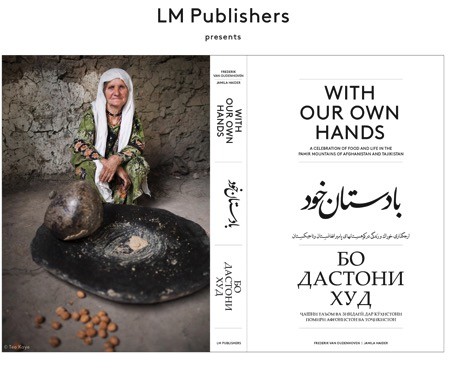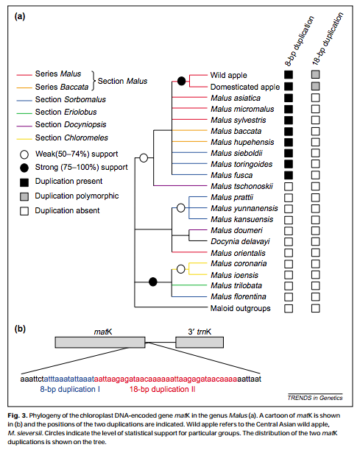- And we’re back.
- India wants to set up a fish genebank. Because climate change, which is scrambling up climates everywhere. And fish are important, so don’t scoff.
- Nepal’s community seed banks in the news. Also Brazil’s. And New Zealand’s, since we’re at it.
- Don’t forget India’s. And not just the community sort, either.
- Our friends at Kew on the wonders of genebanks.
- Someone mention genebanks? Latest photos from Ft Collins.
- You can make your own. Genebank, that is.
- Podcast on a really long-term seed viability experiment.
- It’s not just about the genebanks, though. Or all that biotechnology for that matter. Indeed not, as iPES-Food reminds us.
- Italian monks help rebuild earthquake-hit town. With beer.
- French monks are at it too. Beer, that is.
- Go ahead, have that piece of cheese with that monk-brewed beer.
- Or with a nice IPA for that matter.
- Or a banana beer.
- Sure, take all the romance out of beer, why don’t you.
- The Mesoamerican, entomological roots of the colour scarlet.
- Don’t keep people out if you want to protect forests. I can’t understand why this still needs to be said.
- The story of the quest for super-sweet corn. And a celebration of the life of a giant of corn (as in maize) research.
- And for the “ultimate” avocado.
- How about ultimate dope?
- The traditional, end-of-year, save-the-apple and the-end-of-frankincense stories. Actually there were two on apples. And it’s not all bad news for frankincense.
- Saving the Tamworth pig in Australia. And the camel in Rajasthan.
- Cool map of French traditional foods.
- For your next Saturnalia feast.
- The Met has a “corne field.”
- Earliest evidence of potatoes from the central Andes. What, not Canada?
- Neolithic hunter-gatherers of the Libyan Sahara liked their veggies. Which we all should. But not at these prices. Ah, wait, though, is the melon a vegetable, or a fruit?
- Some crops come, some go.
- Which seems a good place to bring this first, gigantic Nibble of 2017 to a close. Did you miss us? I know you did. But did we miss anything over the holidays? Let us know.
CBN Variety Showcase organizer gets podcast treatment
You remember our recent short blog post on the Culinary Breeding Network’s Variety Showcase? Well, you can now hear all about it on Jeremy’s latest Eat this Podcast, in which he talks to Lane Selman, the organizer. Want a teaser? How’s this?
Many vegetables don’t taste of anything much these days, but whose fault is that, really?
Nibbles: Yeast phylogeny, Jurassic beer, Welsh drink, Italian fruits, Vinegar museum, Lethal yellowing, Wilderness loss
- Beer yeast was domesticated in the 1600s. Or maybe not.
- I see that and raise you 65 million years.
- If you don’t like beer, try Lurvill’s Delight, but it’s only about 100 years old, I warn you.
- Preserving ancient fruits in an Italian orchard.
- And how many different types of vinegar do you think the vinegar museum has?
- The Caribbean coconut is under attack.
- We’ve been such bastards to the environment.
With our own award

You remember this book, right? We enthused about it over a year ago when it first came out.
An old friend, Frederik van Oudenhoven, and his friend and colleague Jamila Haider, are deep in the proofs of what looks to be a wonderful book. With Our Own Hands “tells, for the first time, the cultural and agricultural history of the Afghan and Tajik Pamirs, one of the world’s least known and most isolated civilisations”. Should be a great read, with stunning photographs to accompany the local recipes, essays, stories and poetry. Better yet, generous donors are allowing 1800 copies to travel back to the Pamirs to be given to communities, schools, cooks and libraries.
Well, Fred and Jamila have now won the 2016 Gourmand World Cookbook Award, the Oscars of the cookbook world. You can see photos on the book’s Facebook page. And all without mentioning superfoods. Congratulations!
And by the way, you can listen to Fred talk about the book with Jeremy on Eat This Podcast.
The Adam and Eve of apples?
It was 1993 and US Department of Agriculture (USDA) horticulturist Phil Forsline flew over the magnificent mountain ranges of south-eastern Kazakhstan in a helicopter. Forsline had not been to the huge Central Asian country before; with the recent fall of the Soviet Union, this was his first chance to visit its wild forests. It was here, scientists now believe, that the ancestors of the apples sold in supermarkets around the globe originally evolved. Forsline was on a quest to find out what was really out there, in those mountain gardens.
The appearance on the BBC website of a long piece on the remarkable apple diversity of Kazakhstan and USDA’s efforts to conserve it, which leads with that mouth-watering paragraph above, reminded me that there was a much weirder little article a few weeks ago on much the same subject that I also wanted to point to. If only for the rhetorical flourishes it unleashes:
There are currently 7,500 varieties of apples in the world today — incredibly though, basically every single one of these can be traced back to a Mother and Father tree in a mysterious Kazakhstan forest.
…
In these Kazakh forests, bears, being the picky buggers that they are, would only pick and eat the sweetest apples.Then they’d go and wander around poop everywhere and the seeds of these sweet, delicious apples were spread around.
Then humans cottoned on and were all “hey, sick apples, bears – we’re gonna eat and grow these to stuff in our mouths as well.”
Then we started only growing these apples which is why out of the thousands of apple varieties that originated from these forests, only 15 of them end up in our grocery stores.
So now, thanks to a group of scientists’ gene sequencing magic, we know that 90% of all apples can be traced back to a Mama and Papa tree thousands of years ago – that was most likely eaten by a bear and then pooped out all over the place.
Very cool.
Incidentally, those bear-filled apple forests have recently been formally recognized with the International Carlo Scarpa Prize for Gardens. And of course they’re not new to the attentions of the popular scientific press. And the not so popular, all due respect to Steppe magazine.
But what you really want to know is where that assertion that all apple varieties can be traced to two trees comes from. Well, so did I, and I asked around, including the apple people at USDA. Nearest I can figure it, it may be based on the fact that an oldish paper looking at the taxonomy of apples found a wild accession in the USDA collection that shared a bit of chloroplast genome with many domesticated varieties. According to the abstract:
Two matK duplications were found, one in series Malus and the other in most M. domestica cultivars and one Central Asian M. sieversii accession.
Here’s what that looks like, from a different paper by the same authors with fancier graphics.

It’s all true about the bears though.
Over millions of years, millions of bears just prior to hibernation slowly and unconsciously selected the larger and sweeter fruits of the neo-apples. Bears do have a sweet tooth, as A. A. Milne noted in Winnie the Pooh. The relative inefficiency of a bear’s jaw in crushing fruit has another unintended consequence. As we have seen above, seeds that remain within the tissue (placenta) of the apple do not germinate. Herb Aldwinckle of Cornell University told me he has noticed that very small apples pass intact and uncrushed through a bear’s jaws and gut and, in one or two cases, were seen intact in the fecal mass. The seeds in the small intact fruits would not have germinated. It does not pay, in a genetic sense, to be a very small apple in the Tian Shan.
LATER: Oh, man, I forgot to link to Jeremy’s podcast.